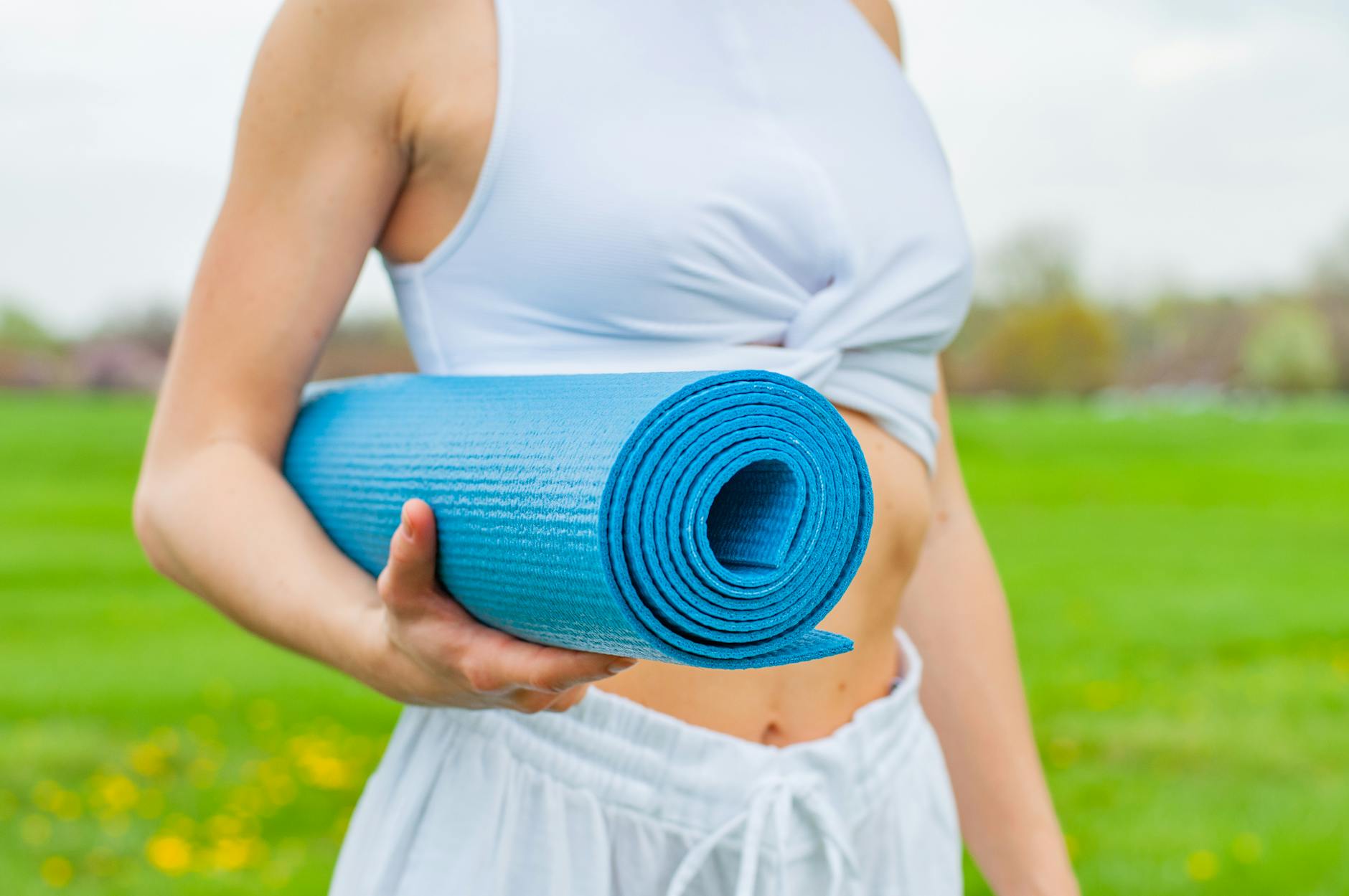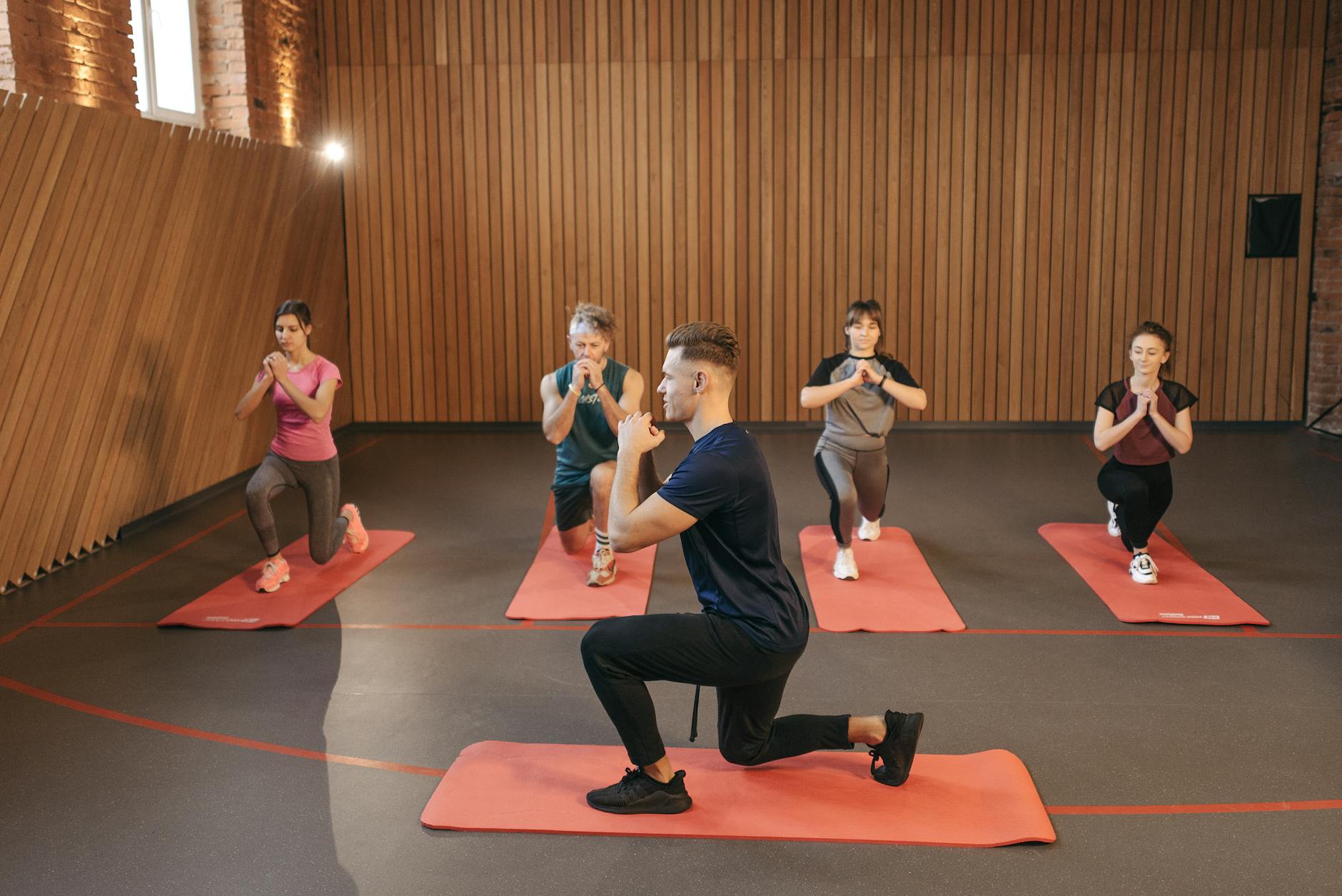Ever felt like your body's a tangled pretzel of stress and stiffness? 🧘♀️ In today's fast-paced world, millions are turning to yoga as their sanctuary of calm and wellness. Yet, stepping onto that yoga mat for the first time can feel as daunting as learning a new language.
Don't let those Instagram-perfect poses intimidate you! Yoga isn't about touching your toes or mastering complex postures - it's about connecting with your body and finding inner peace. Whether you're looking to reduce stress, increase flexibility, or simply try something new, yoga welcomes everyone, regardless of age, fitness level, or body type.
In this beginner's guide, we'll walk you through everything you need to know to start your yoga journey with confidence. From essential equipment and basic poses to different yoga styles and common mistakes to avoid, consider this your friendly roadmap to embracing the transformative power of yoga. Let's unroll our mats and begin! 🌟
Essential Equipment and Space
Choosing the Right Yoga Mat
A quality yoga mat is your foundation for a successful practice. Consider these essential factors:
Feature
Recommendation
Thickness
4-6mm for beginners
Material
PVC or TPE for grip
Size
Standard 68" x 24"
Texture
Textured surface for stability
Comfortable Clothing Options
Select clothing that allows free movement and helps you focus on your practice:
Breathable, moisture-wicking tops
Fitted or semi-fitted pants/legging
Stretchy, non-restrictive fabrics
Layers for temperature regulation
Creating a Peaceful Practice Space
Transform any area into your yoga sanctuary with these elements:
Clear at least 6x6 feet of floor space
Ensure good ventilation
Choose natural or dim lighting
Remove distracting items
Keep props within reach:
2 yoga blocks
1 yoga strap
1 blanket
Your practice space should feel inviting and calm. Keep it clean and organized, and consider adding simple touches like a small plant or essential oil diffuser to enhance the atmosphere. Position your mat away from direct sunlight and ensure you have enough room to extend your arms fully in all directions.
Now that you have your space set up, let's explore some fundamental yoga poses that will form the foundation of your practice.
Basic Yoga Poses for Success
Standing Poses for Stability
Mountain Pose (Tadasana) - Foundation for all standing poses
Tree Pose (Vrksasana) - Improves balance and concentration
Warrior I (Virabhadrasana I) - Builds strength and stability
Seated Poses for Flexibilit
Easy Pose (Sukhasana) - Basic cross-legged sitting positions
Child's Pose (Balasana) - Gentle stretch for back and hips
Forward Fold (Paschimottanasana) - Stretches hamstrings and spinal
Lying Poses for Relaxation
Corpse Pose (Savasana) - Essential for relaxation
Bridge Pose (Setu Bandha) - Gentle back bend
Knees-to-Chest (Apanasana) - Releases lower back tension
Proper Breathing Techniques
Basic breathing alignment for beginners:
Breath Phase
Duration
Focus Area
Inhale
4 counts
Expand chest
Hold
2 counts
Maintain posture
Exhale
4 counts
Release tension
Start each pose by establishing proper breathing rhythm. Inhale through your nose, allowing your belly to expand naturally. Exhale slowly through your mouth, releasing any tension. Practice each pose for 3-5 breath cycles.
Remember to:
Keep movements slow and controlled
Listen to your body's limitations
Maintain steady breathing throughout
Focus on alignment over depth
With these foundational poses mastered, you'll be ready to explore different yoga styles that resonate with your practice goals.
Understanding Yoga Styles
Hatha Yoga for Beginners
Hatha yoga serves as the perfect entry point for beginners, focusing on basic postures and breathing techniques. In this gentle practice, poses are held longer, allowing new practitioners to build strength and understand proper alignment. Here's what makes Hatha ideal for beginners:
Slower-paced sequence
Emphasis on proper breathing (pranayama)
Clear instruction and alignment cues
Foundation for all other yoga styles
Gentle Vinyasa Flow
Vinyasa introduces flowing movements synchronized with breath, offering a slightly more dynamic experience than Hatha. For beginners, gentle vinyasa provides:
Element
Benefit
Fluid Movement
Improves coordination
Breath Connection
Enhances mind-body awareness
Modified Poses
Builds confidence gradually
Variable Pace
Allows personal adaptation
Restorative Yoga Benefits
Restorative yoga focuses on complete relaxation and stress relief, using props to support the body in comfortable positions. Key benefits include:
Reduced stress and anxiety
Improved sleep quality
Enhanced flexibility without strain
Better mind-body connection
Faster recovery from other physical activities
Now that you understand these fundamental yoga styles, let's explore how to build a consistent practice that works for you
Building Your Practice
Starting with 10-minute Sessions
Begin your yoga journey with manageable 10-minute sessions. Focus on 2-3 basic poses, maintaining proper breathing throughout. These short sessions help build consistency without overwhelming your body or schedule.
Weekly Practice Schedule
Day
Activity
Duration
Monday
Basic poses & stretching
10-15 mins
Wednesday
Balance poses
10-15 mins
Friday
Flow sequence
10-15 mins
Weekend
Free practice or rest
Optional
Tracking Your Progress
Keep a simple yoga journal to monitor your development:
Note which poses feel challenging
Track flexibility improvements
Record session duration
Document energy levels post-practice
When to Advance to Next Level
Look for these signs of readiness:
Completing 10-minute sessions without strain
Maintaining proper form in basic poses
Consistent practice for 3-4 weeks
Feeling mentally prepared for new challenges
Finding Online Resources
Access quality learning materials through:
Reputable yoga apps (Yoga Studio, Down Dog)
YouTube channels dedicated to beginner yoga
Virtual yoga studio memberships
Yoga podcasts for technique tips
Now that you have a structured approach to building your practice, let's explore common beginner mistakes to avoid ensuring safe and effective progress.
Common Beginner Mistakes
Avoiding Injury
Never force yourself into poses
Listen to your body's signals
Warm up properly before attempting challenging poses
Stop if you experience sharp pain
Proper Alignment Basics
Keep your spine neutral during standing poses
Stack joints properly (knees over ankles, shoulders over wrists)
Engage your core in all poses
Distribute weight evenly through your feet
Common alignment mistakes to watch for:
Pose Type
Common Error
Correct Form
Standing
Locking knees
Keep slight bend
Forward Folds
Rounding back
Hinge at hips
Downward Dog
Collapsed shoulders
Press firmly through hands
Managing Expectations
Start with basic poses before advancing
Focus on proper form over depth
Practice consistently rather than intensely
Remember that flexibility develops gradually
Many beginners push too hard too fast, risking injury and discouragement. Instead, approach yoga as a journey of gradual improvement. Focus on mastering fundamental poses with proper alignment before attempting more advanced variations. It's better to perform simple poses correctly than complex ones incorrectly.
Now that you understand common pitfalls to avoid, let's explore the numerous health benefits that a proper yoga practice can bring to your life.
Health Benefits
Physical Improvements
Increased flexibility and joint mobility
Enhanced muscle strength and tone
Improved posture and balance
Better respiratory function
Enhanced cardiovascular health
Mental Wellness Gains
Regular yoga practice offers significant
mental health benefits:
Mental Benefit
Description
Clarity
Improved focus and concentration
Mindfulness
Enhanced present-moment awareness
Emotional Balance
Better emotional regulation
Self-awareness
Deeper mind-body connection
Stress Reduction Techniques
Deep breathing exercises (Pranayama)
Progressive muscle relaxation
Mindful movement
Meditation during Savasana
Better Sleep Quality
Yoga can transform your sleep patterns through:
Reduced anxiety and racing thoughts
Release of physical tension
Regulated circadian rhythm
Calming nervous system activation
Regular yoga practice creates a positive feedback loop between physical and mental well-being. Studies show that practicing yoga for just 20 minutes daily can reduce cortisol levels by up to 14%. The combination of gentle movement, controlled breathing, and mindfulness techniques works synergistically to promote overall health.
From improved digestion to enhanced immune function, yoga's benefits extend far beyond the mat. Its holistic approach to wellness makes it particularly effective for managing chronic conditions and preventing future health issues.
Now that you understand the comprehensive benefits of yoga, let's address some common beginner mistakes to ensure you can safely enjoy these advantages in your practice.
Starting your yoga journey doesn't have to be complicated or overwhelming. With the right equipment, basic poses, and understanding of different styles, you can build a sustainable practice that suits your needs and lifestyle. Remember to be patient with yourself, avoid common mistakes like pushing too hard, and focus on proper form and breathing techniques.
The incredible health benefits of yoga - from improved flexibility and strength to reduced stress and better sleep - make it a worthwhile investment in your physical and mental wellbeing. Take the first step today by unrolling your mat and beginning with simple poses. Your future self will thank you for embarking on this transformative journey.









Comments
Post a Comment